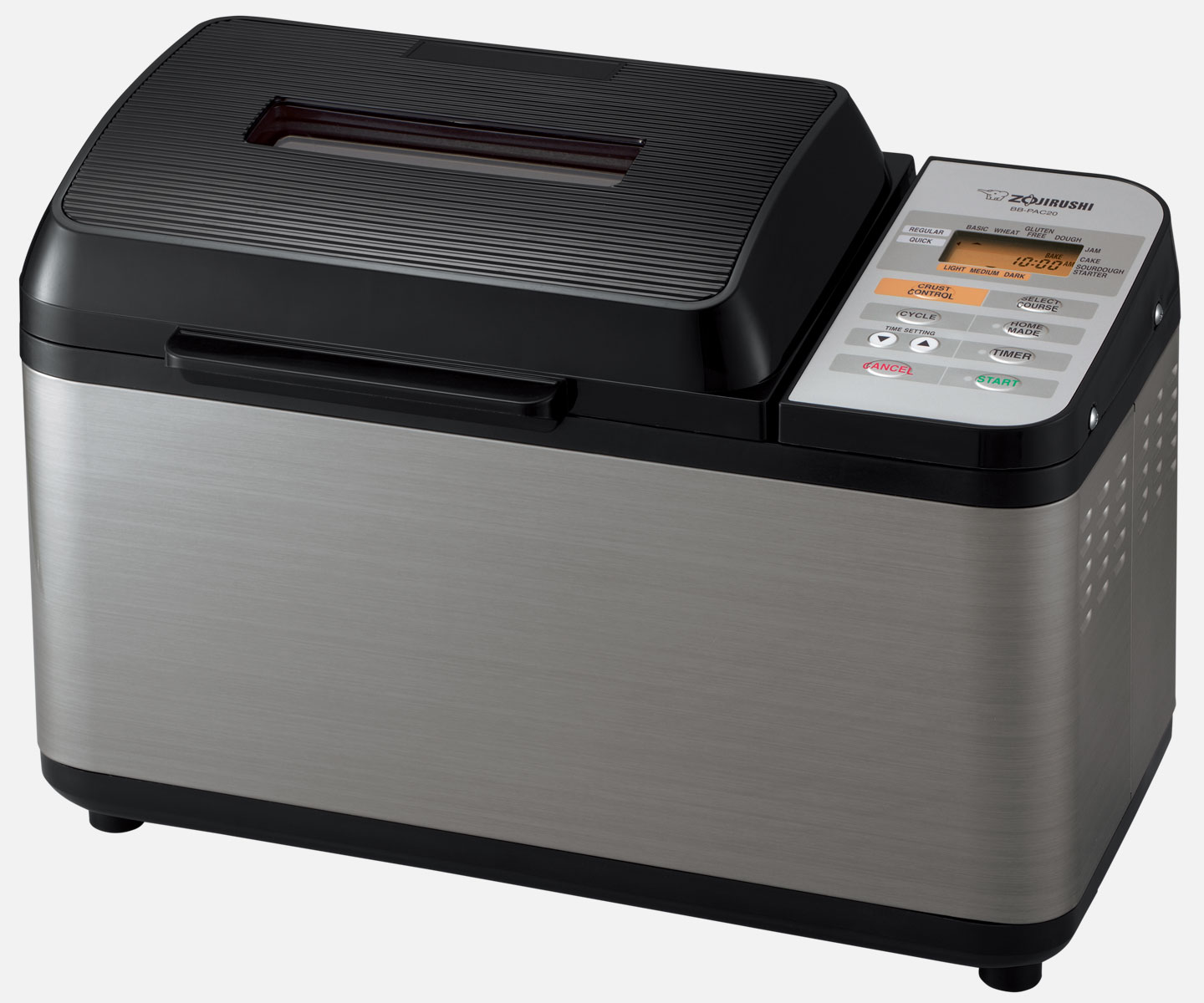Thanks to the few times the old machine did work, I decided to buy myself a brand new Zojirushi.
 |
| Zojirushi Home Bakery Virtuoso (BB-PAC20) |
I considered getting a machine that had an automatic dispensing tray for raisins or nuts, but that tray wasn't very big, and the machine just didn't sound as good.
The new machine has a few improvements over the old one, such one:
- 2 mixing paddles instead of 1
- Bigger capacity
- Horizontal loaf rather than vertical
 |
| Whole-wheat walnut bread |
 |
| Whole-wheat and white, cooked with a timer |
 |
| Pumpernickel, cooked with a timer |
The latest bread I tried was a pull-apart honey whole-wheat, using a recipe from Hensberger's Bread Machine Cookbook and techniques from the Zojirushi cookbook's weird, "home made variations" recipe for "party bread". This was a trial run for Thanksgiving dinner rolls. I want to cook them in the bread machine, if possible, so they'll be ultra-fresh and we won't have to use the oven for anything but turkey. Plus, you know, it'll be cool.
 |
| The remains of the honey whole-wheat |
Second, although the Zojirushi recipe is very unclear and incomplete, it worked better than I expected. The loaf, created from 15 mini-balls of dough, was fairly easy to pull apart, despite having no flour or cornmeal or oil/butter to keep the mini-balls from sticking to each other. I guess the mini-balls' little private rising time helped.
Third, although the Zo recipe calls for embedding sausage, chocolate, or cream cheese in each piece, I had nothing savory to put in them. I did, however, put a TJ's speculoos chocolate cup in one, just to see what would happen. It was a bit messy, melting into a spreading puddle that my husband and I gleefully chased down. Perhaps chocolate chips might work better, since they supposedly don't melt as well. However, for dinner rolls I'd stick with savory fillings, if any.
By the way, the Hensberger book is one of several that my friend Shams recently gave to me. Thanks, Shams!


These look delicious! Remind me why you reduce the amount of salt? I mean, obviously low sodium is better in general, but we've found our home-made bread (pancakes, etc.) to be bland and flat-tasting when there isn't enough salt. We rarely add salt to anything else we cook and don't eat a lot of processed food, so it's not like we have a particularly high salt tolerance. Have you found the magic combination of low salt and lively taste? Tell me more!
ReplyDeleteI reduce the salt for health reasons. (I have an inner ear condition that is sodium sensitive.) Otherwise I'd use full salt, because salt is flavor—especially in bread!
ReplyDelete